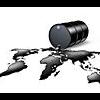
Автор:
Nordman,
в Моторные масла ОБЩАЯ
-
Сейчас на странице 0 пользователей
Нет пользователей, просматривающих эту страницу.
Объявления
-
Реклама
-
12052 Ваша зимняя вязкость?
-
1. Ваша зимняя вязкость?
-
0W-16
-
0W-20
-
5W-20
-
0W-30
-
5W-30
-
10W-30
-
0W-40
-
5W-40
-
10W-40
-
10W-50
-
15W-40
-
0W-50
-
5W-50
-
- Пожалуйста, войдите или зарегистрируйтесь для голосования в опросе.
- Просмотреть тему
-
-
Выбор масла
-
Реклама







Рекомендованные сообщения
Создайте аккаунт или войдите в него для комментирования
Вы должны быть пользователем, чтобы оставить комментарий
Создать аккаунт
Зарегистрируйтесь для получения аккаунта. Это просто!
Зарегистрировать аккаунтВойти
Уже зарегистрированы? Войдите здесь.
Войти сейчас